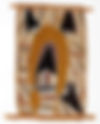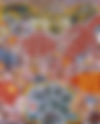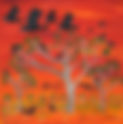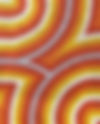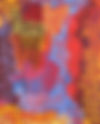Search Results
1083 results found with an empty search
- Kelly Napanankga Michaels - Artist Profile - Cooee Art Leven
Artist Profile for Kelly Napanankga Michaels < Back Kelly Napanankga Michaels Kelly Napanankga Michaels ARTIST PROFILE ARTIST CV MARKET ANALYSIS READ FULL ARTIST PROFILE top Anchor 1 PROFILE Kelly Napanankga Michaels ARTIST CV Market Analysis MARKET ANALYSIS Disclaimer: At Cooee Art Leven, we strive to maintain accurate and respectful artist profiles. Despite our efforts, there may be occasional inaccuracies. We welcome any corrections or suggested amendments. Please contact us with your feedback .
- Lloyd Jampijinpa Brown - Artist Profile - Cooee Art Leven
Artist Profile for Lloyd Jampijinpa Brown < Back Lloyd Jampijinpa Brown Lloyd Jampijinpa Brown ARTIST PROFILE ARTIST CV MARKET ANALYSIS READ FULL ARTIST PROFILE LLOYD JAMPIJINPA BROWN - YANKIRRI JUKURRPA (EMU DREAMING) - NGARLIKIRLANGU Sold AU$240.00 LLOYD JAMPIJINPA BROWN - YANKIRRI JUKURRPA (EMU DREAMING) - NGARLIKIRLAN Sold AU$240.00 top Anchor 1 PROFILE Lloyd Jampijinpa Brown ARTIST CV Market Analysis MARKET ANALYSIS Disclaimer: At Cooee Art Leven, we strive to maintain accurate and respectful artist profiles. Despite our efforts, there may be occasional inaccuracies. We welcome any corrections or suggested amendments. Please contact us with your feedback .
- Poly Ngal - Art Leven
NgalPoly Poly Ngal Poly Ngal Poly (Polly) Ngal was born in 1936 into the Anmatyarre tribe. Later she moved to Camel Camp in Utopia with her family and sisters, Kathleen Ngal, Maisy Ngal and Angeline Pwerl. Like many of the women in Utopia, Poly began her artistic career in batik in the early late 1970s, before venturing into painting with acrylic paints on canvas. Poly often assisted her sister Kathleen and also the late Emily Kngwarrey with whom she shared the same country. Together with her sisters, Poly is a senior custodian of the Bush Plum Dreaming. Poly's work depicts the Bush Plum and its effects on her country, illustrating the topography in shades of reds, oranges and yellows reflecting the varying seasonal palette. Like her sister Kathleen, Poly's work uses layer upon layer of colour, creating a multi-dimensional effect to reveal the Bush Plum Ankwety - and her country - Alparra in all its glory. “Poly’s work is the most sensual and loose of the three, echoing Emily's magical touch in her layering of colour to create a rich atmospheric surface, which is very alive, suffused with colour and movement, and redolent of the natural cycles of her totem — the bush plum. Poly has a delicacy of touch reminiscent of the very fine batik work the women were doing there in the 80’s. Hers is very much the work of an older woman, that magic in the blending of underdotting and overdotting, loose, natural, and sensual.” Collection: The Holmes a Court Collection, Perth. Group Exhibitions: 2019 - Women in Colour including Andrea Adamson, Teresa Baker, Patricia Tunkin Baker, Karla Dickens, Sally Gabori, Athena Nangala Granites, Maggie Green, Nungarrayi Myra Herbert, Jennifer Ingkatji, Langaliki Lewis, Minma Marlilu , Jorna Newberry, Poly Ngal, Kathleen Ngale, Charmaine Pwerle, Kitty Napanangka Simon, Kalaya Tjukurrpa, Helen McCarthy Tyalmuty, Liddy Walker at Cooee Art, Sydney. 2008 - Emily Kngwarreye and her Legacy, featuring the following artists: Abie Kemarre Loy, Emily Kngwarreye, Gladdy Kemarre, Gloria Petyarre, Kathleen Ngal, Kathleen Petyarre, Lily Lion Kngwarrey, Minnie Pwerle, Poly Ngal, Sarah Morton Kngwarrey, presented by Coo-ee Aboriginal Art Gallery, Sydney at Art Front Gallery, Hillside Terrace, Shibuya, Tokyo, Japan. 2008 - Visions of Utopia, featuring the following artists: Angelina Ngal, Billy Benn Perrurle, Cowboy Loy Pwerl, Elizabeth Kunoth Kngwarrey, Elizabeth Mpetyan, Gladdy Kemarr, Jean Kngwarrey, Kathleen Ngal, Maisy Petyarr, Nancy Kunoth Petyarr Petyarr, Pansy Petyarr McLeod, Poly Ngal, Ruby Morton Kngwarrey, Trudy Raggett at Coo-ee Aboriginal Art Gallery, Sydney. 2003 - 20th Telstra National Aboriginal and Torres Strait Islander Art Award, Museum and Art Gallery of the Northern Territory, Darwin. 2000Arts d’Australie, Arts d'Australie, Stéphane Jacob / Espace Mezzo - Avenue des Champs-Elysées, Paris.; 2000 Arts d’Australie, Arts d'Australie, Stéphane Jacob / Air France, Paris. 1990, 'Utopia - A Picture Story,' an exhibition of 88 works on silk from the Holmes a Court Collection by Utopia artists which toured Eire and Scotland. 1989, Utopia Women's Paintings, the First Works on Canvas, A Summer Project, 1988-89, S. H. Ervin Gallery, Sydney. Bibliography: Brody, A., 1989, Utopia Women's Paintings: the First Works on Canvas, A Summer Project, 1988-89, exhib. cat., Heytesbury Holdings, Perth. (C) ; Brody, A., 1990, Utopia: a Picture Story, 88 Silk Batiks from the Robert Holmes a Court Collection, Heytesbury Holdings Ltd, Perth. (C) Explore our artworks See some of our featured artworks below ANGELINA PWERLE NGAL - UNTITLED ( BUSH RAISIN MAN) Price AU$3,000.00 ALISON (JOJO) PURUNTATAMERI - WINGA (TIDAL MOVEMENT/WAVES) Out of stock LILY YIRDINGALI JURRAH HARGRAVES NUNGARRAYI - KURLURRNGALINYPA JUKURRPA Price From AU$13,500.00 BRONWYN BANCROFT - UNTITLED Out of stock JOSHUA BONSON - SKIN: A CELEBRATION OF CULTURE Price AU$8,500.00 BOOK - KONSTANTINA - GADIGAL NGURA Price From AU$99.00 FREDDIE TIMMS - MOONLIGHT VALLEY Price AU$35,000.00 NEIL ERNEST TOMKINS - BURN THERE, DON'T BURN THERE Price AU$7,000.00 SHOP NOW
- Mowarra Ganambarr - Artist Profile - Cooee Art Leven
Artist Profile for Mowarra Ganambarr < Back Mowarra Ganambarr Mowarra Ganambarr ARTIST PROFILE ARTIST CV MARKET ANALYSIS READ FULL ARTIST PROFILE MOWARRA GANAMBARR - DJAKUNG - FRESH WATER FILE SNAKE SOLD AU$1,200.00 top Anchor 1 PROFILE Mowarra Ganambarr ARTIST CV Market Analysis MARKET ANALYSIS Disclaimer: At Cooee Art Leven, we strive to maintain accurate and respectful artist profiles. Despite our efforts, there may be occasional inaccuracies. We welcome any corrections or suggested amendments. Please contact us with your feedback .
- Betty Bundamurra - Artist Profile - Cooee Art Leven
Artist Profile for Betty Bundamurra < Back Betty Bundamurra Betty Bundamurra ARTIST PROFILE ARTIST CV MARKET ANALYSIS READ FULL ARTIST PROFILE BETTY BUNDAMURRA - SPRING IS NEAR Sold AU$0.00 top Anchor 1 PROFILE Betty Bundamurra ARTIST CV Market Analysis MARKET ANALYSIS Disclaimer: At Cooee Art Leven, we strive to maintain accurate and respectful artist profiles. Despite our efforts, there may be occasional inaccuracies. We welcome any corrections or suggested amendments. Please contact us with your feedback .
- BEAUTIFUL ART MADE PROPER WAY - Art Leven
BEAUTIFUL ART MADE PROPER WAY Cooee Art Redfern - 17 Thurlow St, Redern, NSW 2016 From 15 January to 19 February 2022 BEAUTIFUL ART MADE PROPER WAY Artists from Bindi Mwerre Anthurre Artists Studio From 15 January to 19 February 2022 BEAUTIFUL ART MADE PROPER WAY Artists from Bindi Mwerre Anthurre Artists Studio From 15 January to 19 February 2022 Cooee Art Redfern - 17 Thurlow St, Redern, NSW 2016 Established in 2000, the Bindi Mwerre Anthurre Artists studio is the first in Australia to occupy the intersection between supported studios and Aboriginal Art Centres. The studio provides a means for Aboriginal artists living with a disability to develop and receive recognition for their artistic practices by providing supported studio spaces, a national exhibition schedule, design contracts, multimedia collaborations, art fairs and art award opportunities. “Mwerre Anthurre Art - “Beautiful Art Made Proper Way” - Billy Benn Perrurle VIEW CATALOGUE VIEW VIDEO EX 227
- William (King Billy) Barak - Art Leven
BarakWilli William (King Billy) Barak William (King Billy) Barak 1824 - 1903 William Barak was one of the seminal Indigenous artists of Australia’s early colonial period. His life and art were characterised by the duality inherent in his strong tribal identity and his status as an important intermediary in the cultural dialogue that took place between the black and white inhabitants of the early Victorian settlement. While he was renowned amongst early historians and anthropologists for his stories of Aboriginal life, his art became the vehicle he used toward the end of his life to express his continued sense of connection with traditional life. His paintings, principally created during the 1880s and 1890s, are essentially nostalgic in that his subject remained exclusively the life he had experienced prior to integration into colonial society. In 1835, at just 11 years of age, Barak attended the signing of John Batman’s treaty with his Wurundjeri clansmen, which led to the establishment of Melbourne. As a young man, he joined the Native Mounted Police, having left his community in 1844. At this time the plight of Aboriginal people in colonial Australia had become parlous. 'The Noble Savage myth had collapsed,' wrote Robert Hughes in his first book, The Art of Australia 'and the native had become the butt of every colonial joke' (1966: 42). It had improved, though only marginally, by the time Barak was painting almost half a decade later. In the latter decades of the eighteenth century, Barak did not have a traditional society to return to. His people, the Wurundjeri, had suffered food deprivation and introduced diseases as a consequence of the pastorialisation of Port Phillip land. While Barak was perceived as a figure of successful Aboriginal integration, he used his position to the advantage of the surviving Aboriginal community of the time. Throughout his life, he was a seminal figure in the fight for land rights around the Port Phillip region – remarkable as one of the earliest formal claims to land rights in Australia. His argument to institute viable agricultural reserves was taken seriously by the local government in Melbourne, resulting in the establishment of the Corranderk Aboriginal Reserve on Badger Creek. Later, Barak instigated an investigation into the continuing problems in the region through the Corranderk inquiry of 1881, prompted by a proposal to remove the Aboriginal station in the area. Barak found himself accepted into a particularly high ranking white community at Corranderk, where he lived and painted in his later life. For a time, he lived with the De Pur family, and later the widow Ann Bon, both high ranking society names. Bon was crucial to the promotion of Barak’s art in Australia and overseas, sending several of his drawings back to England where they attracted some attention. What fascinated the public and buyers of the late nineteenth century was the anthropological aspect of Barak’s drawings, in line with the then prevailing interest in ‘primitivism’ and pre-colonial life. While it seems that Bon and the Dr Purs were motivated by genuine altruism, the envisaged 'promoter-protector' role of Bon sits somewhat awkwardly now; it is impossible to escape the fact that Barak lived with the De Purs out of some necessity. Despite his ongoing activism, the cast of Barak as a remnant of the traditional Aboriginal society of South-Eastern Australia, the last ‘noble savage’ even, continued to dominate his art. His painting of ceremony as a primary subject matter is inherently related to his personal struggle as an Aboriginal person estranged from his people. It is a story, which may be located, more generally, in the fight for land rights of the time. And yet, no explanation accompanies Barak’s drawings – he himself declined to elaborate on them – and, as a consequence, the deeper significance of his drawings has never been fully understood. It was only in the latter part of the twentieth century that their artistic merit was really recognised. Unlike the meanings inherent in the work of the contemporary Papunya Tula artists of the early 1970s, there was no Geoff Bardon to draw accompanying sketches illustrating the story behind their art; with Barak, meaning is often ambiguous, and the symbolism of his work varies greatly. However, in common with the Papunya artists a century later, Barak never painted his contemporary context. His entire oeuvre depicts the past as he looks back into pre-colonial times. The repetition of his subject matter, ceremony, as a recurring motif, is an expression of a culture that Barak had by then lost. It was accompanied by a deep feeling of longing and yearning. In Remembering Barak, his niece, Joy Murphy-Wandin wrote, ‘I see scars so deep they bring tears to my eyes and a crushing pain within my heart – a lonely, heartbroken man desperate for the return of his family, his people, and his culture’ (2003: 6). Despite the loss of their specific meaning from a contemporary perspective, Barak’s paintings are a direct visual translation of his traditional culture. They speak a complex visual language. Barak drew stylistically from the traditional visual art of South-eastern Australia. His composition is typically geometric, as human figures and animals are arranged in patterns so dense as to be evocative of chiaroscuro designs. The natural world is drawn as rather more a feature than a background to the composition – each item, flora or fauna, is totemic and bears significance, often in direct relation to the human figures. Aboriginal figures wearing possum skin cloaks are each imbued with an individual personality, such that no two figures are the same. Indeed, the small idiosyncrasies drawn into the figures and objects that appear in Barak’s work may be understood in terms of a symbolism grounded in traditional forms of representation. The designs that appear on the possum skin cloaks and carved weapons are characteristic of certain regions. Body markings are painted in the fashion of miny’ti (sacred designs) demarcating identity and place. Meaning is often ambiguous, where artefacts commonly hold multiple meanings that vary depending on the context and depicted usage. Barak worked with naturally occurring pigments, - charcoal, and red and yellow ochres - combining these with European colourants. Natural pigments mixed in a wash with barium sulphate and ivory black allowed for a greater range of tone and intensity. The green and blue hues, which appear in several of Barak’s drawings, are probably European watercolours. Andrew Sayers (1994) draws an analogy between Barak’s method of combining these materials and the position of Barak himself, situated between his traditional life and European society. However, his use of colour is overwhelmingly restrained and, most commonly, executed in materials either from the earth or strongly related to it. Although largely forgotten or overlooked for almost a century, the figure of William Barak, the artist, has taken on an almost mythical status over the past decade. In the late nineteenth and early twentieth century, William Barak’s artworks were largely entered into museum collections in Europe, with the largest concentrations in the ethnographic museums of Neuchatel, Berlin and Dresden. In 2003 the National Gallery of Victoria staged the important exhibition, Remembering Barak, at the Ian Potter Centre, no doubt prompted by the recent surge of interest in Barak as a person of cultural significance in Australian art history, and the exponential increase in market demand for his work. However, those paintings and drawings still in private hands are rare indeed and it will only be the luckiest of collectors that will be fortunate to personally own one. Works by William Barak are most notable in the market for their rarity. With a total of 18 recorded sales dating back as far as 1975 his only recorded failures at auction, other than a boomerang offered at Lawson Menzies in 2005, occurred prior to 1990. Only one sale of a work on canvas has ever been recorded, in 1998. The painting, executed in natural earth pigments, charcoal and pencil, was a gift from the artist to Mrs. G.M. Davies in 1895. It temporarily set his record price at auction when sold for $74,000 against a pre-sale estimate of $30,000-50,000. Over the following decade only two other works transcended this result. When this lone work on linen was finally re-offered in 2009, it created a new record at a stratospheric $504,000. The record stood until 2016, when a work on paper, fresh to the market, was offered for sale by Amina and Franco Bellgiorno-Nettis through Bonhams. Ceremony,1897 carried a pre-sale estimate of $180,000-250,000 but by the time the dust had settled it was hammered down for $512,400 including buyer's premium. It should be noted that not all of Barak’s works have had success in the secondary market, for various reasons. In 2005 a decorated throwing boomerang with a high estimate of $1,500 failed to sell. All other unsold works came to auction prior to 1990. Two watercolours seem to have been overestimated at $15,000-18,000 at that time. The recent prominence afforded this artist a reassessment of his contribution to Australian art through a major exhibition and catalogue produced by the National Gallery of Victoria. It led to spectacular sales at auction. In 2009, William Barak leapt to 7th place on the list of the most important Aboriginal artists of all time, yet his works rarely appear for sale. In fact, not a single work appeared at auction between 2009, when his former record was set, and 2016 when it was broken. Expect works by this artist to generate a flurry of attention from informed collectors whenever they appear for sale, and his record price to leap when anything of real quality appears in the future. Explore our artworks See some of our featured artworks below ANGELINA PWERLE NGAL - UNTITLED ( BUSH RAISIN MAN) Price AU$3,000.00 ALISON (JOJO) PURUNTATAMERI - WINGA (TIDAL MOVEMENT/WAVES) Out of stock LILY YIRDINGALI JURRAH HARGRAVES NUNGARRAYI - KURLURRNGALINYPA JUKURRPA Price From AU$13,500.00 BRONWYN BANCROFT - UNTITLED Out of stock JOSHUA BONSON - SKIN: A CELEBRATION OF CULTURE Price AU$8,500.00 BOOK - KONSTANTINA - GADIGAL NGURA Price From AU$99.00 FREDDIE TIMMS - MOONLIGHT VALLEY Price AU$35,000.00 NEIL ERNEST TOMKINS - BURN THERE, DON'T BURN THERE Price AU$7,000.00 SHOP NOW
- Josephine Burak - Artist Profile - Cooee Art Leven
Artist Profile for Josephine Burak < Back Josephine Burak Josephine Burak ARTIST PROFILE ARTIST CV MARKET ANALYSIS READ FULL ARTIST PROFILE JOSEPHINE BURAK - MILIMIKA Sold AU$0.00 top Anchor 1 PROFILE Josephine Burak ARTIST CV Market Analysis MARKET ANALYSIS Disclaimer: At Cooee Art Leven, we strive to maintain accurate and respectful artist profiles. Despite our efforts, there may be occasional inaccuracies. We welcome any corrections or suggested amendments. Please contact us with your feedback .
- Adam Gibbs Tjapaltjarri - Artist Profile - Cooee Art Leven
Artist Profile for Adam Gibbs Tjapaltjarri < Back Adam Gibbs Tjapaltjarri Adam Gibbs Tjapaltjarri ARTIST PROFILE ARTIST CV MARKET ANALYSIS READ FULL ARTIST PROFILE top Anchor 1 PROFILE Adam Gibbs Tjapaltjarri ARTIST CV Market Analysis MARKET ANALYSIS Disclaimer: At Cooee Art Leven, we strive to maintain accurate and respectful artist profiles. Despite our efforts, there may be occasional inaccuracies. We welcome any corrections or suggested amendments. Please contact us with your feedback .
- David Bell - Artist Profile - Cooee Art Leven
Artist Profile for David Bell < Back David Bell David Bell ARTIST PROFILE ARTIST CV MARKET ANALYSIS READ FULL ARTIST PROFILE DAVID BELL - MAALNG- NIGHT HERON SOLD AU$1,900.00 top Anchor 1 PROFILE David Bell ARTIST CV Market Analysis MARKET ANALYSIS Disclaimer: At Cooee Art Leven, we strive to maintain accurate and respectful artist profiles. Despite our efforts, there may be occasional inaccuracies. We welcome any corrections or suggested amendments. Please contact us with your feedback .
- George Hairbrush Tjungurrayi - Art Leven
TjungurrayiGeorg George Hairbrush Tjungurrayi George Hairbrush Tjungurrayi 1943 Born near the claypan and soakwater site of Wala Wala in the far reaches of the Western Desert, George Tjungurrayi's initial contact with the outside world occurred as a seventeen-year-old boy. He left the Gibson Desert on foot in the company of three other Pintupi companions to walk the long road east until intercepted by a truck just south of Mount Doreen. Soon after walking in to Papunya in 1962, he became a guide for Jeremy Long’s welfare patrol into Pintupi country later that year. He finally settled in West Camp, Papunya, where he began painting around 1976 after encouragement from Nosepeg Tjupurrula. Over the following decade George worked intermittently at Yayayi and Mount Liebig, and also Walungurru. His works, created during the 1970’s and throughout the 1980’s, were characterized by the ubiquitous dotted grids of lines and circles common to works by Yala Yala Gibbs, Anatjari Tjamptjinpa and others who played a formative influence in Pintupi Tingari imagery. While painting at Papunya and its outstations in the late 1970's, George worked in close proximity to these and other ‘established’ artists. It was not until well in to the mid 1980’s that he expanded his palette beyond the autumnal tones created by the basic palette of red, yellow, black and white by mixing in a wider array of colours and experimenting stylistically. His preoccupation from the outset had been the ceremonial activities and men’s stories associated with the travels of the Tingari ancestors as they relate to his most significant sites including his birthplace Wala Wala, and the region surrounding Kiwirrkura, Lake Mackay, Kulkuta, Karku, Ngaluwinyamana, and Kilpinya to the north-west of Kintore. His art first achieved prominence when exhibited in Friendly Country-Friendly People, organized by Dick Kimber at Araluen Arts Centre in Alice Springs in 1990. The work selected included the figurative representation of the Snake, Kunia, curled at its ancestral home in Karrilwarra. However, figuration in his work had always been rare and by 1994, George had forsaken figurative imagery altogether in favour of works entirely composed of duo-tone linear roundels and shapes arranged in tight formal geometric patterns that pulsed with a subtle optical rhythm. His works had always suggested a sacred geometry related to topographic depictions of the sites visited by the Tingari, but from this period onward his paintings grew increasingly distanced stylistically from their ceremonial origins and the application of distinct dotted brush strokes. Tjungurrayi depicts the Tingari Dreaming Cycle and the sacred sites of his ancestral history. However, he departs from the characteristic style of Western Desert painting, with its distinct dotted style, in his minimalist approach to iconography and by creating linear effects through the paint. In common with Ronnie Tjampitjinpa and Turkey Tolson, George experimented for a time with four panelled squares and rectangles before returning to transverse parallel lines that made eccentric deviations toward the margins of the painted surface. According to Judith Ryan the major Tingari Dreaming that Tjungurrayi created in 1996 (now hanging in the National Gallery of Victoria) marks the moment at which he reached the ‘conceptual distillation’ of his signature style. ‘The gently brushed pale mauve and plum lines create tonal reflections and visual sensations, like reverberations in a lake’. While the final work is duotone in appearance, the artist has technically worked in four layers by painting and overpainting two shades of subtle colour with different pigment densities in quivering perfect parallel lines. The work, according to Ryan, became a template for his paintings that followed. This stylistic departure from ceremonial origins was part of a larger movement of the Papunya Tula artists, which Rex Butler has described as fundamentally abstract and modernist. ‘The decisions Tjungurrayi makes in putting together his paintings are first of all artistic ... (thus) it is not culturally specific; its specificity is that belonging to painting itself' (Butler 2002: 2). Regardless of whether Tjungurrayi’s art, along with that of Emily Kngwarreye for instance, is mediated by culture and history or free of it, this approach to the act of painting itself has certainly been accepted in the art market. The work of a number of Papunya men including George, Willy Tjungurrayi, Ronnie Tjampitjinpa, Mick Namarari and Turkey Tolson Tjupurrula, can clearly be seen as a move away from traditional conventions. The magical power of these works draws on their original source, and primary influence, that of the ancient artistic lexicon inherent in the fluted carving, keyed designs, and fine parallel lines that embellish men’s ceremonial shields and sacred objects. They have no focus but invite the viewer to enter a crucial cultural performance. The energy and life-force enacted on to the painted surface evokes sensations and sensibilities that must primarily be experienced and felt. The eye of the viewer travels over the surface of these paintings, paralleling the way they move over nature. In doing so they are charged with an intensity that can become disorienting. While they continue to symbolize ancestral journeys and ceremonial body paint designs, they find immediate favour amongst collectors in an era of modernist globalism as they fit neatly with western notions of abstract minimalism and have serendipitous aesthetic parallels with works created contemporaneously by ‘Op-art’ and ‘simulationist’ artists such as Victor Vasarely, Ross Bleckner, Phillip Taaffe, and Bridget Riley. As with the works of his Pintupi male contemporaries George Tjungurrayi’s works have no real focus yet they can be ‘inhabited, so that the mind’s eye, or the eye’s mind, can move about them credibly’. In common with early works by Riley, ‘nature is not landscape, but the dynamism of visual forces, an event rather than an appearance’. George Tjungurrayi held his first solo exhibitions in 1997 at Utopia Art Sydney and the following year at Gallery Gabreille Pizzi in Melbourne, about which Robert Rooney wrote a rave review in the Melbourne Age. By 2000 George Tjungurrayi had become one of Papunya Tula’s most sought after painters and was listed amongst Art Collector magazine’s 50 most collectable artists in 2003, the same year that he had been included on the exhibition Meridian, Focus on Contemporary Aboriginal Art at the Museum of Contemporary Art in Sydney. His work featured in the landmark exhibition Talking about Abstraction at the Ivan Dougherty Gallery in 2004, an exhibition intended to compare works by Western and Indigenous artists and examine the ways in which each was directly influenced by or resonant with the other. In 2006 he was highly commended 34th Alice Prize and the following year he was selected as a finalist in the Wynne Prize at the Art Gallery of New South Wales. George Tjungurrayi’s work is held in many important international museums including the Groniger Museum in the Netherlands and the Musee des Arts d’Afrique et d’Oceanie in Paris. Alongside Ronnie Tjampitjinpa, George Tjungurrayi has now become the principle living exponent of Pintupi men’s art. George Tjunurrayi’s works first appeared at auction in 1995, the year that Yatintjanga 1978 (painted just two years after he took up the brush) was offered for sale. The 125 x 162 cm canvas was a fine example of Pintupi Tingari paintings of the period, featuring interconnected sites in very pleasing earth tones. It was estimated at $10,000-15,000 and sold at Sotheby's for just $11,500 (Lot 615) . This is still the highest price ever achieved for an early career work and currently the 22nd highest result his paintings have achieved at auction. By the end of 2001, 12 works had been offered of which ten had sold. However, despite a clearance rate of 83%, his average price at that time was a paltry $2,846. It was not until 2002 that a work achieved a price anywhere near those commanded by his better works in the primary market. In June that year Sotheby’s sold Mamultjulkulnga 1998 a painting that measured 152 x 181.5 cm for $26,840 (Lot 44) It was transcended the following year when a similarly sized work, Paykapungkunya 1997, sold for $35,750. Very few major paintings failed to sell until 2008, a year which saw only six of the 22 works offered find new homes, thereby dropping his career success rate dramatically from 63% to 54%. Yet 2008 also saw two works enter his top ten at second and eighth position. His then record price had been achieved the previous year for a work depicting the claypan site of Mamultjulkulnga near Lake McKay created in 2001. The large Papunya Tula provenanced piece, in which the finest of line work was meticulously layered to achieve the final glowing terracotta tones, justified its $50,000-70,000 estimate by achieving the midpoint at Sotheby’s November sale (Lot 57). In 2009 Deutscher and Hackett justified an even higher estimate of $70,000-90,000 by setting a new record for the sale of Untitled 2001 for $72,000. The large work, measuring 182 x 244 cm, fitted the style and pattern of previous record setters bearing the Papunya Tula stamp of provenance. Despite these stellar sales, mimicking 2008, the following years have brought mixed results, and seen the artist’s career clearance rate drop to only 52%. 2012 was a good example, with only one of five works on offer selling. It went for $10,200. This trend has continued unabated for some time. By 2019 he had dropped to 101st place after only three works sold of 12 offered for an average price of only $2822. There is no doubt that the works created by George Tjungurrayi for Papunya Tula are favoured in the secondary market with these occupying eight of his top ten and 14 of his top 20 results. However, this may simply reflect the relative numbers of works he has created for the company compared to those he has painted for independent dealers. By far the largest paintings that have been offered for sale at auction were created for independent dealer Peter Van Groessen and these were originally offered in the primary market through Kimberley Art Gallery in Melbourne. Yam Dreaming and My Father’s Country were both created in 1999 and measured approximately 180 x 350 cm. When offered through Lawson~Menzies in June 2007 and May 2006 they sold for $43,200 and $32,400 to set the artist’s current fourth and seventh highest results. George Tjungurrayi only began painting in 1976, therefore it is not surprising that no works on board have appeared. However, it does seem unusual that hardly any 1980s paintings have been offered. The highest price paid for one of these was for an unremarkable stiff and formulaic work entitled Wirrulnya 1988. Offered at Sotheby’s in November 2007 the 182 x 121 cm painting carried an estimate of just $7,000-10,000 and, even with a Papunya Tula provenance, sold for just $8,400. Overall, despite a dramatic fall in his clearance rate since 2008, works by George Tjungurrayi created after the mid 1990s would appear to be set to continue their rise in value. With a relatively low record price of $72,000 and only seven works having sold for more than $30,000 it would seem like a propitious time for collectors to look at his work more seriously. Other seminal artists who took Pintupi men’s art into its new paradigm in the later part of their career, including Turkey Tolson and Mick Namarari, have record prices of $180,000, $210,000 respectively for works created in the mid 1990s. George is still alive and actively working, and hopefully he has many productive years ahead of him. Because of this I would expect his prices in the primary market to exceed those for all but the very finest that appear at auction for some time into the foreseeable future. This should create a good opportunity for those collectors, who may not be able to accommodate the largest of his works, to pick up something good at a far more reasonable price at auction than they would pay at one of the galleries, which are contractually tied to Papunya Tula. If Tjungurrayi continues to intermittently paint outside of the company there may be many fine works that buyers, who care less about provenance as a political issue, may be able to purchase for less than the premium that Papunya Tula works attract. Explore our artworks See some of our featured artworks below ANGELINA PWERLE NGAL - UNTITLED ( BUSH RAISIN MAN) Price AU$3,000.00 ALISON (JOJO) PURUNTATAMERI - WINGA (TIDAL MOVEMENT/WAVES) Out of stock LILY YIRDINGALI JURRAH HARGRAVES NUNGARRAYI - KURLURRNGALINYPA JUKURRPA Price From AU$13,500.00 BRONWYN BANCROFT - UNTITLED Out of stock JOSHUA BONSON - SKIN: A CELEBRATION OF CULTURE Price AU$8,500.00 BOOK - KONSTANTINA - GADIGAL NGURA Price From AU$99.00 FREDDIE TIMMS - MOONLIGHT VALLEY Price AU$35,000.00 NEIL ERNEST TOMKINS - BURN THERE, DON'T BURN THERE Price AU$7,000.00 SHOP NOW
- Beryl Jimmy - Artist Profile - Cooee Art Leven
Artist Profile for Beryl Jimmy < Back Beryl Jimmy Beryl Jimmy ARTIST PROFILE ARTIST CV MARKET ANALYSIS READ FULL ARTIST PROFILE BERYL JIMMY - WANAMPI SOLD AU$3,000.00 BERYL JIMMY - KAPI TJUKULA Sold AU$380.00 top Anchor 1 PROFILE Beryl Jimmy ARTIST CV Market Analysis MARKET ANALYSIS Disclaimer: At Cooee Art Leven, we strive to maintain accurate and respectful artist profiles. Despite our efforts, there may be occasional inaccuracies. We welcome any corrections or suggested amendments. Please contact us with your feedback .




